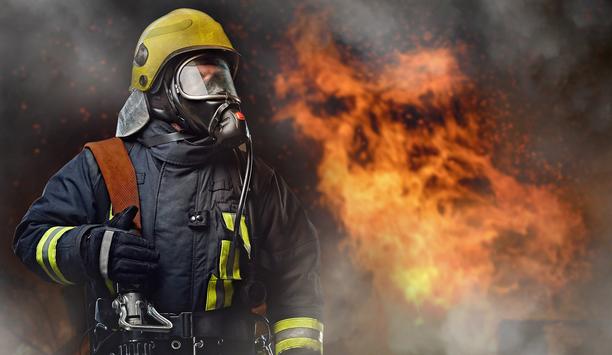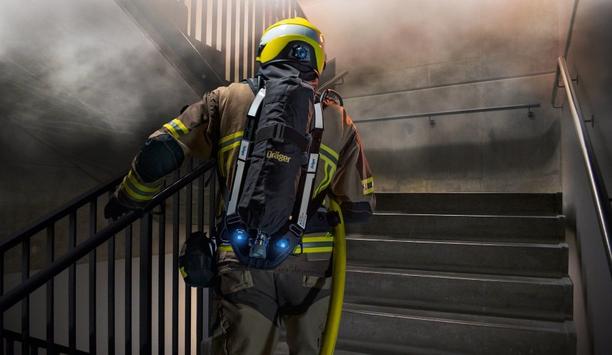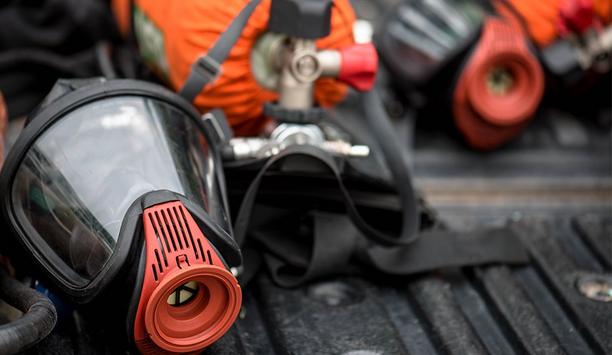Technology and innovation are shaping the future of the fire industry. During 2020, TheBigRedGuide.com published many articles touching on research, development, and new technologies.
This roundup will review some of the most popular articles, including links to the original content.
Thermal Imaging & Augmented Reality (AR)
Combining thermal imaging and augmented reality (AR) enables firefighters to see through smoke, in effect enhancing their vision in the life-threatening environment of a fire.
AR capabilities can be deployed in a visor attached to a helmet, and an affixed thermal camera captures the images. The most recent prototype of such a product is a robust helmet design that withstands rough treatment.
The system also includes software processing that augments thermal images to enable firefighters to see the outline of objects more clearly, thus enabling their detection in the field.
Rocky Mountain Research Station (RMRS)
The fire research program at the Rocky Mountain Research Station (RMRS) in Missoula, Mont., enhanced firefighter safety by improving metrics for determining firefighter safety zones and escape routes, improving and modernizing determination of fire danger, and developing systems and applications such as the Wildfire Safety Evaluator (WiSE) and WildfireSAFE to facilitate the use of these metrics by wildland firefighters.
The program has also pioneered the development of metrics for scenario planning and assessing wildfire risk to communities.
Internet of Things (IoT)
The Internet of Things (IoT) is expanding the variety of technical capabilities deployed in the interest of public safety, and smart cities are leveraging IoT data to provide insights and improve operations.
The U.S. Department of Homeland Security is promoting technology development through its Science and Technology Directorate’s SCITI (pronounced “city”) solutions lab. SCITI stands for Smart City and Internet of Things Innovation.
Crowd Management & Fire Protection Research Foundation (FPRF)
Fire Protection Research Foundation (FPRF) has developed a computerized tool to provide data Crowd management can be critical in a fire emergency – or in almost any other emergency situation.
The Fire Protection Research Foundation (FPRF) has undertaken a project to develop a computerized tool to provide data and situational awareness about crowds based on computer vision analysis of the video.
Crowds have become an unusual occurrence during the COVID-19 pandemic, but sooner or later, life will be returning to normal. When it does, the safety consequences of poor crowd management will again become top-of-mind for many in the emergency response fields.
Complexity Of GPS Coordinates
A solution to address the complexity of GPS coordinates in an emergency situation, “what3words” is an easy way to identify precise locations using a unique combination of three words.
The benefits of what3words for fire and emergency services agencies are already being realized.
what3words addresses are shorter, easier to understand over the phone, and built-in error prevention technology allows emergency services to immediately verify the location and correct mistakes.
Drones For Firefighting And Fire Prevention
Drones, or unmanned aerial vehicles (UAVs), are expanding their usefulness in the arenas of firefighting and fire prevention, whether in a downtown business district or in fire-prone wildlands.
Among other benefits, drones can provide situational awareness, guide emergency response, and perform dangerous duties while keeping fire personnel safe.
Drones provide a new solution for extinguishing fires in high-rise buildings, which can occur beyond the reach of fire nozzles and rescue ladders.
Artificial Intelligence & Machine Learning
Students and faculty at Hongik University are developing AI and machine learning (ML) algorithms The fire service worldwide collects a lot of data, and a university in Seoul, South Korea, is researching how to crunch the numbers using artificial intelligence (AI) to predict the probability of fires more accurately and to direct fire departments’ assets where they will do the most good.
Students and faculty at Hongik University are developing AI and machine learning (ML) algorithms into a model that can predict the probability of fires and enable authorities to take action to make the city safer.
The project has used the Microsoft Azure Machine Learning Studio, a Web portal for data scientist developers. The researchers ran various ML modules until they were able to predict fires with 90% accuracy.
Firefighters Health
Wellness, mental toughness, and psychological self-care for firefighters are available in the palms of their hands; in a smart phone app.
Fire and police agencies can provide their officers access to these and other self-help tools in an app that reflects each agency’s identity and design choices.
Employees can be assured that the use of the app is totally confidential.
Tracking Exposure
Tracking firefighters’ exposure to smoke and cancer-causing materials is important when it comes to assessing liability claims, worker's compensation, and coverage for occupational health claims.
Tracking and documenting exposure data for firefighters is easier than ever using the National Fire Operations Reporting System (NFORS) Exposure Tracker App, developed by the International Public Safety Data Institute (IPSDI) as part of the NFORS Analytics Data System.







